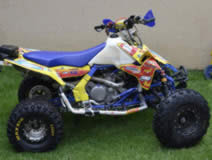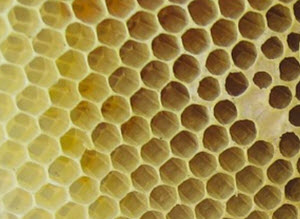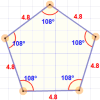Polygons

A polygon is a plane shape with straight sides.
Is it a Polygon?
A polygon is a flat 2-dimensional (2D) shape made of straight lines. The sides connect to form a closed shape. There are no gaps or curves.
Polygon
(straight sides)
Not a Polygon
(has a curve)
Not a Polygon
(open, not closed)
Polygon comes from Greek. Poly- means "many" and -gon means "angle".
Example: Stop Sign
A stop sign is an example of a regular polygon.
It has eight equal sides and angles, making it a regular octagon.
Can you think of more polygons in real life?
Types of Polygons
Regular or Irregular
A regular polygon has all angles equal and all sides equal. Otherwise it is irregular
| Regular | Irregular |
Concave or Convex
A convex polygon has no inward-pointing angles: internal angles are at most 180°.
If any internal angle is greater than 180° then the polygon is concave. (Think: concave has a "cave" in it)
| Convex | Concave |
Simple or Complex
A simple polygon has a single, unbroken boundary, and it doesn't cross over itself. A complex polygon has sides that intersect, making many polygon rules invalid.
| Simple Polygon (this one's a Pentagon) |
Complex Polygon (also a Pentagon) |
More Examples
Names of Polygons
| If it is a Regular Polygon... | |||
| Name | Sides | Shape | Interior Angle |
|---|---|---|---|
| Triangle (or Trigon) | 3 | 60° | |
| Quadrilateral (or Tetragon) | 4 | 90° | |
| Pentagon | 5 | 108° | |
| Hexagon | 6 | 120° | |
| Heptagon (or Septagon) | 7 | 128.571° | |
| Octagon | 8 | 135° | |
| Nonagon (or Enneagon) | 9 | 140° | |
| Decagon | 10 | 144° | |
| Hendecagon (or Undecagon) | 11 | 147.273° | |
| Dodecagon | 12 | 150° | |
| Triskaidecagon | 13 | 152.308° |
|
| Tetrakaidecagon | 14 | 154.286° |
|
| Pentadecagon | 15 | 156° |
|
| Hexakaidecagon | 16 | 157.5° |
|
| Heptadecagon | 17 | 158.824° |
|
| Octakaidecagon | 18 | 160° |
|
| Enneadecagon | 19 | 161.053° |
|
| Icosagon | 20 | 162° |
|
| Triacontagon | 30 | 168° |
|
| Tetracontagon | 40 | 171° |
|
| Pentacontagon | 50 | 172.8° |
|
| Hexacontagon | 60 | 174° |
|
| Heptacontagon | 70 | 174.857° |
|
| Octacontagon | 80 | 175.5° |
|
| Enneacontagon | 90 | 176° |
|
| Hectogon | 100 | 176.4° |
|
| Chiliagon | 1,000 | 179.64° |
|
| Myriagon | 10,000 | 179.964° |
|
| Megagon | 1,000,000 | ~180° | |
| Googolgon | 10100 | ~180° | |
| n-gon | n | (n−2) × 180° / n | |
You can make names using this method:
|
|
|
|||||||||||||||||||||||||||||||||||||||||||||||||||||||||||||||
|
Example: a 62-sided polygon is a Hexacontadigon |
|||||||||||||||||||||||||||||||||||||||||||||||||||||||||||||||||
BUT, for polygons with 13 or more sides, it is OK (and easier) to write "13-gon", "14-gon" ... "100-gon", etc.
Remembering
Quadrilateral (4 Sides)

A Quad Bike has 4 wheels
Pentagon (5 Sides)

The "Pentagon" in Washington DC has 5 sides
Hexagon (6 Sides)

Honeycomb has Hexagons
Septagon (7 Sides)
Think Septagon is a "Seven-agon"
Octagon (8 Sides)

An Octopus has 8 tentacles
Nonagon (9 Sides)
Think Nonagon is a "Nine-agon"
Decagon (10 Sides)
Think Decagon has 10 sides,
just like our Decimal system has 10 digits
